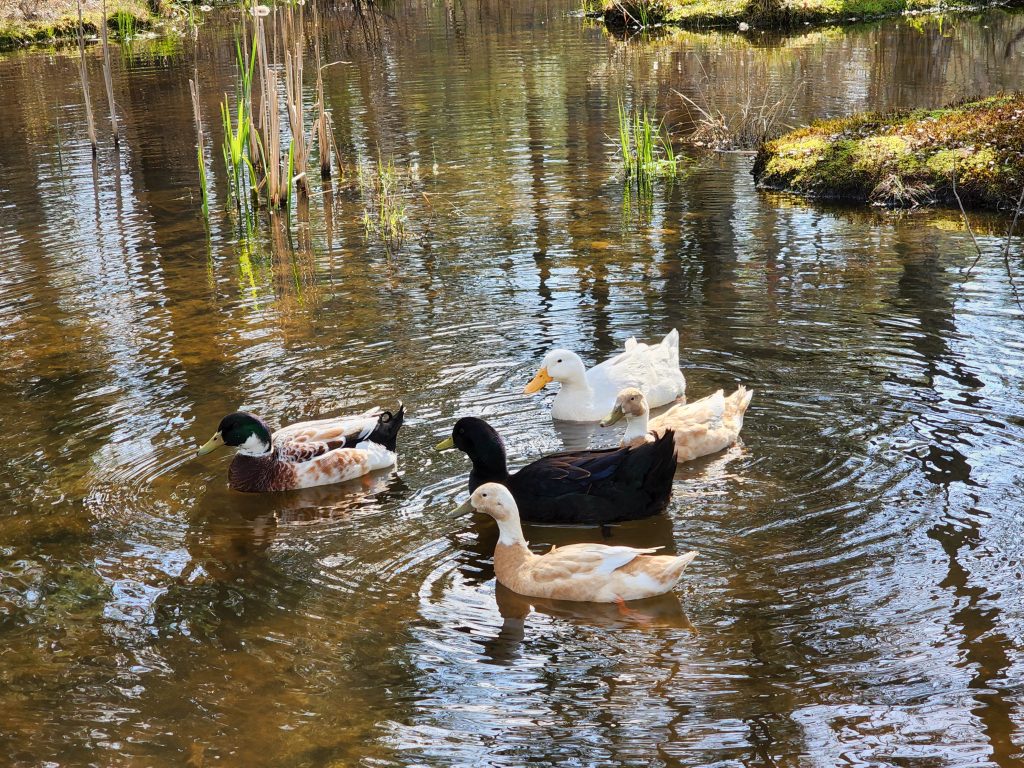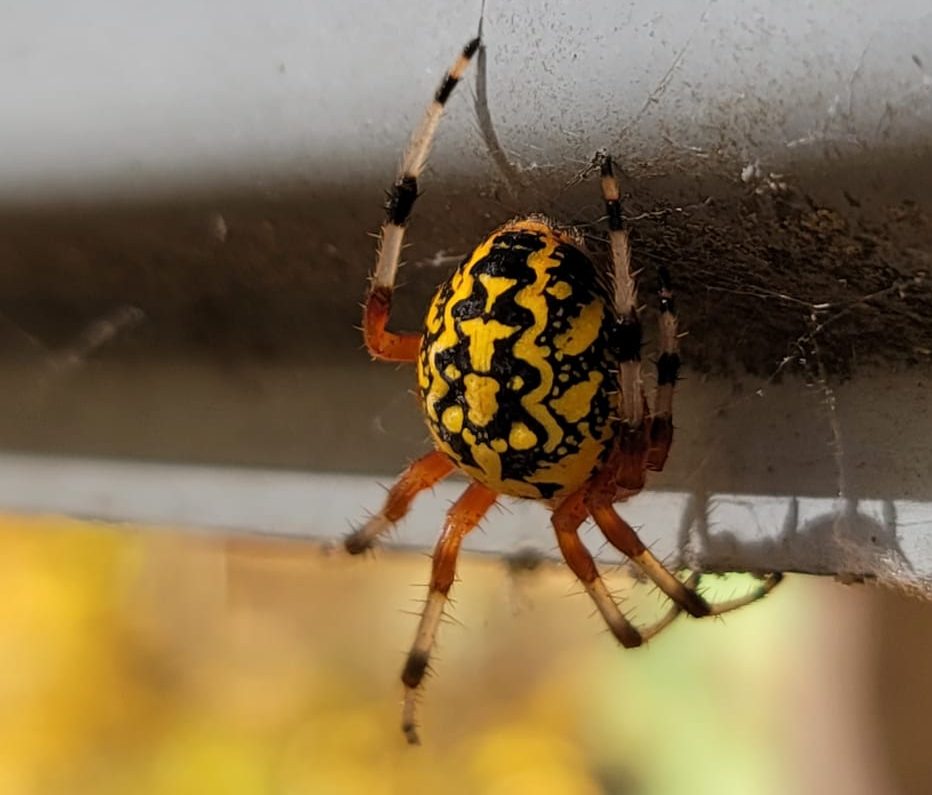Wildlife at Bowdish Lake is abundant and varied.
Canada Goose with nest
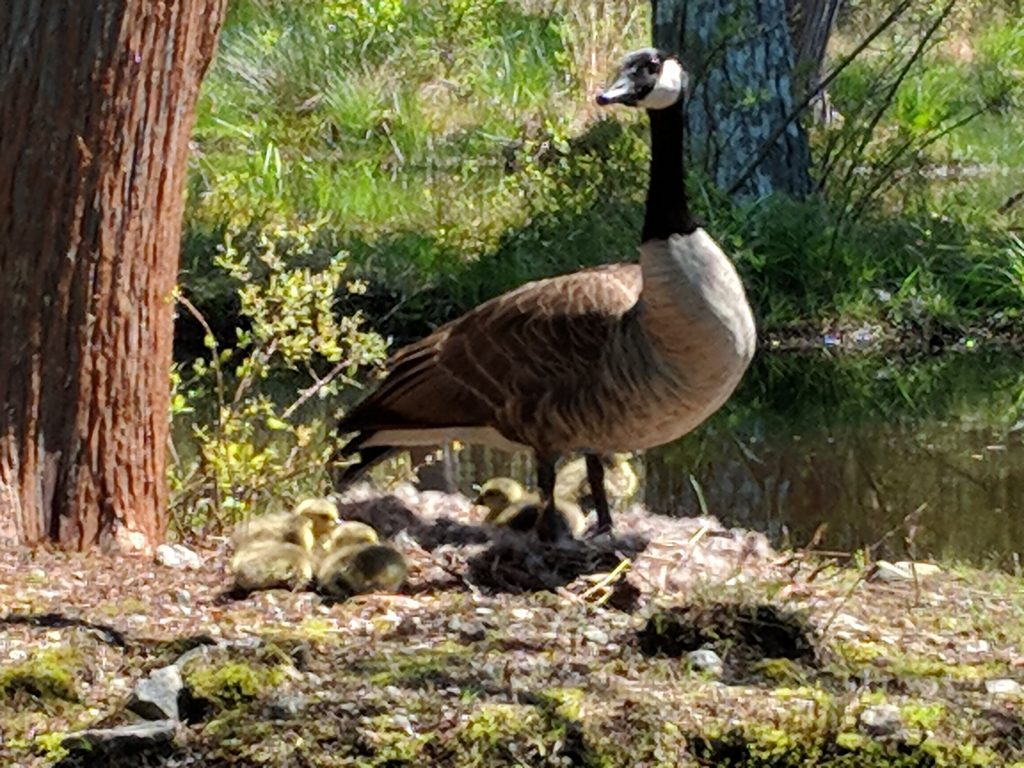
Canada Goose with nest
Both migratory and resident Canada geese
can be found throughout the United States and Canada. Some populations of migratory geese travel from their breeding grounds in the arctic down to the southern states for the winter, while others only migrate locally. Canada geese from the North Atlantic population call Rhode Island home during the winter, while resident geese utilize ponds, streams, bays, fields, or other open landscapes year-round.
During their annual molt
when geese lose and regrow their flight feathers in the early summer, they congregate at ponds or lakes that provide a safe place to rest adjacent to a food source. After the molt and throughout the fall, geese gradually increase the distance of their feeding flights and are more likely to be found in open areas such as lawns, golf courses or corn fields, which offer a plentiful food source and clear view of approaching predators. Around October, when smaller ponds freeze over, resident geese move to open water in Narragansett Bay or coastal areas and are joined by the arriving migratory populations.
Canada geese are large birds
and will defend their nest if approached during the nesting season. Feeding geese can cause them to become unafraid of humans and lead to human-wildlife conflict that is otherwise avoidable. Aside from these circumstances, geese are typically not aggressive and will avoid interacting with humans.
Canada geese change their diet based on the season
In the winter they feed on berries, seeds, and corn fields. In the warmer months, they consume more grasses, grazing on lawns or utilizing their long necks to reach submerged aquatic vegetation.
Wild Turkey
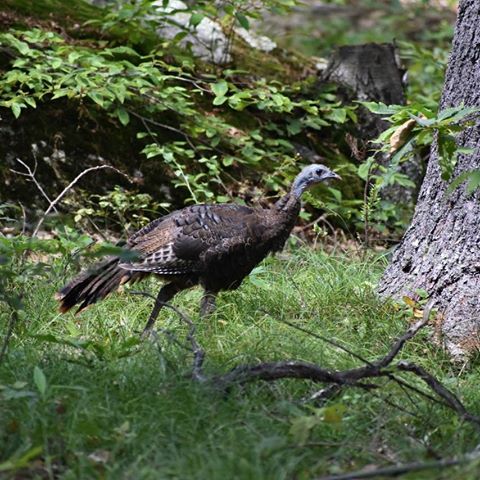
Turkey
Wild turkeys spend most of their time traveling on foot, however, they can run and fly. As the sun begins to set, turkeys will fly into lower limbs of trees and make their way upward to a high roost spot. They generally roost in flocks, but sometimes individually.
In the spring, males gobble to attract females and warn competing males. They display for female birds by strutting with tail feathers fanned, wings lowered, while making non-vocal hums and chump sounds.
Males will breed with multiple females and form all male flocks outside of the breeding season. Females are responsible for the poult (chick) rearing.
Poults (chicks) travel in family groups with their mother, often combining with other family groups to form large flocks (safety in numbers).
Ducks on the Beach
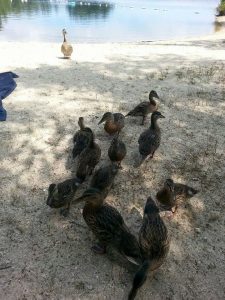
Ducks on the Beach
Pine Warbler at Wilber Pond
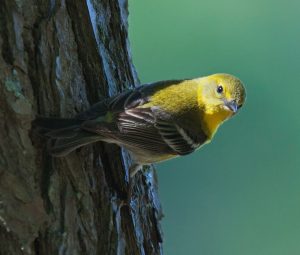
Pine Warbler at Wilber Pond
This well-named bird is not often seen away from pine trees, especially during the breeding season. More sluggish than most of their relatives, Pine Warblers forage in a rather leisurely way at all levels in the pinewoods, from the ground to the treetops. This species is only a short-distance migrant, and almost the entire population spends the winter within the southern United States. Unlike most warblers, it regularly comes to bird feeders for suet or for other soft foods.
Black Throated Warbler at Wilber Pond
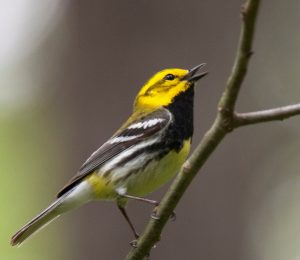
Black Throated Warbler at Wilber Pond
Males establish territories by singing, also by chasing and fighting with intruding males. Nest sites are next to trunk where two or more small branches fork out of conifer, usually low (often only a few feet above ground). The race nesting in southern swamps places its nest well out from trunk, and often higher (to 50′ or more above ground). Nest (built by both sexes) is open cup of twigs, grass, weeds, bark, spiderwebs, lined with plant fibers, hair, moss, and feathers.
Northern Water Snake at Wilber Pond Dam
Nerodia sipedon (24-42″, up to 55″)
This thick-bodied snake is quite variable in color and pattern
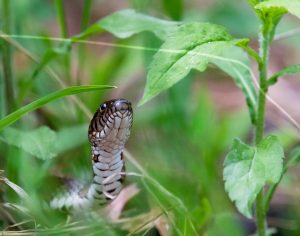
Northern Water Snake at Wilber Pond Dam
Background color ranges from light gray to dark brown. It is almost always patterned with reddish-brown, brown or black crossbands near the head and alternating back and side blotches farther down the body. The pattern generally becomes less noticeable as the water snake grows larger, and often results in a uniformly dark snake. Body scales are strongly keeled and the belly is patterned with black or orange crescents.
Courtship and mating typically occur in May and June, and females give birth to 20-40 young in August and September.
Water snakes are found in a variety of wet habitats
including lakes, ponds, rivers, streams and wetlands. They are excellent swimmers, both on the surface or submerged, and commonly forage along the water’s edge for prey. Fish, frogs, tadpoles and salamanders make up the bulk of their diet, though they will also take small mammals, birds, insects, crayfish and other invertebrates. Water snakes are very common and can often be found basking on beaver dams and lodges, bridge abutments, banks and shrubs. In the spring, water snakes are commonly reported by homeowners who find them in their backyards.
When threatened, they rapidly retreat to water
If cornered, they do not hesitate to strike.
Water snakes can almost always be counted on to bite, defecate and spray a particularly foul-smelling musk when handled.
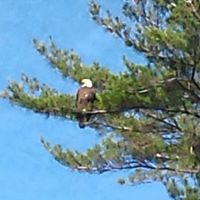
Bald Eagle
The emblem bird of the United States, majestic in its appearance. It is not always so majestic in habits: it often feeds on carrion, including dead fish washed up on shore, and it steals food from Ospreys and other smaller birds. At other times, however, it is a powerful predator. Seriously declining during much of the 20th century, the Bald Eagle has made a comeback in many areas since the 1970s. Big concentrations can be found wintering along rivers or reservoirs in some areas.
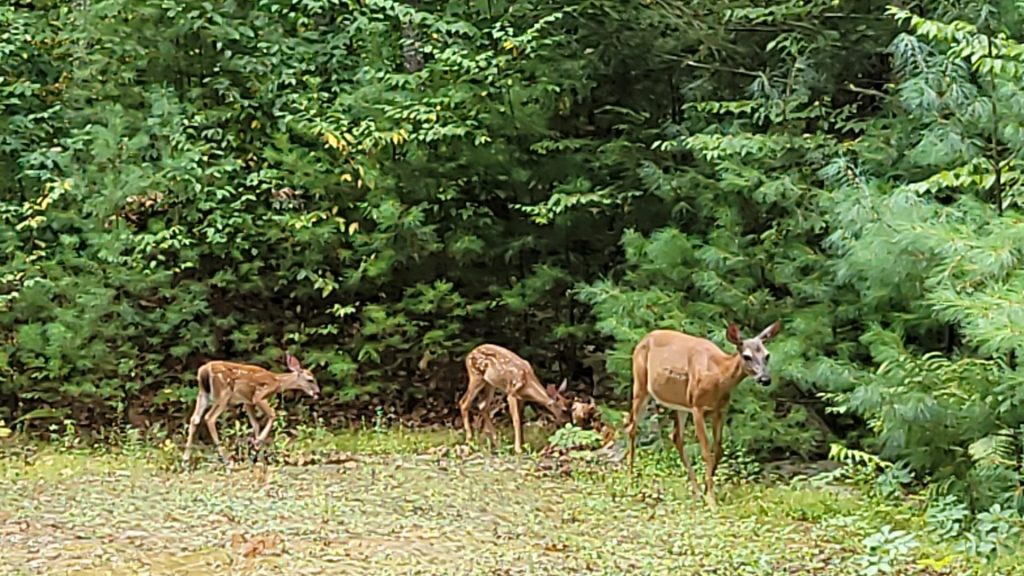
FINDING FAWNS
It is not uncommon to find a very young fawn alone during the spring. Mothers will leave their fawns for the first two weeks after birth to forage, only returning occasionally to nurse.
Does do not always leave their fawns in sheltered places and you may come across a lone fawn in your yard or a public place.
Never touch or approach a fawn.
A fawn’s primary defense mechanism is to stay completely still and quiet, nestled into whatever spot his mother placed him while she went off to forage. People often mistake this defensive behavior for injury, weakness or illness. But it isn’t. A still, quiet fawn is a healthy fawn.
Mother deer know that their presence near their babies alerts predators to the fawns’ existence, which puts them at risk. In order to keep her young safe, a doe will leave her fawn in a secluded area, often for as long as 12 hours, distracting predators away from her baby while she forages for food.
Fawns’ camouflage and their ability to stay still keep them safe from predators while their mother is away. When approached by a perceived predator (humans, pets or wildlife) a fawn’s instinctual response is to lay very low and not move at all. People often mistake this defensive behavior for injury, weakness or illness, but in fact it is healthy behavior for a fawn.
If you are concerned for the safety of the animal because it is on a road or injured, call the
Wildlife Rehabilitators Association of RI:
(401) 294-6363
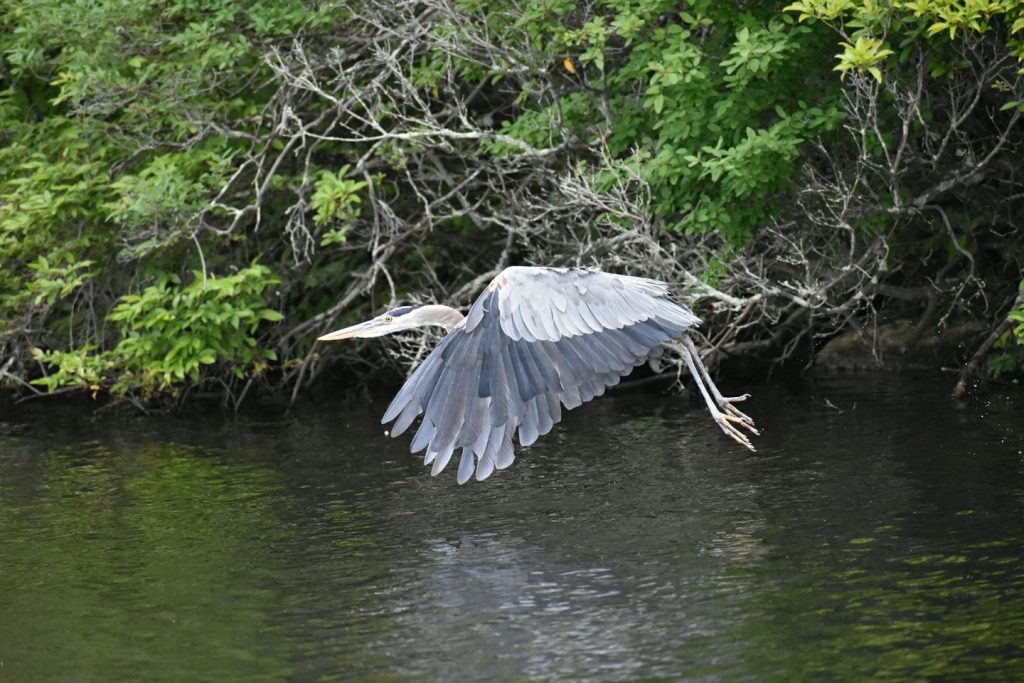
Widespread and familiar (though often called ‘crane’), the largest heron in North America
Often seen standing silently along inland rivers or lakeshores, or flying high overhead, with slow wingbeats, its head hunched back onto its shoulders. Highly adaptable, it thrives around all kinds of waters from subtropical mangrove swamps to desert rivers to the coastline of southern Alaska. With its variable diet it is able to spend the winter farther north than most herons, even in areas where most waters freeze.
